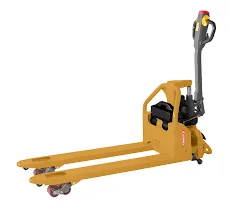


Understanding Rigging Chain Blocks A Comprehensive Overview
In the world of material handling and lifting equipment, rigging chain blocks play a crucial role in ensuring safety, efficiency, and effectiveness in various industrial applications. These devices, often found in construction sites, warehouses, and manufacturing plants, are essential for lifting heavy loads with precision and control.
What is a Rigging Chain Block?
A rigging chain block, also known as a chain hoist or chain block, is a mechanical device designed to lift heavy objects using a chain. This device utilizes a series of pulleys and gears to reduce the effort needed to lift substantial weights. When a user pulls on the chain, it activates the gears within the block, allowing for increased lifting power while reducing manual effort.
Components of a Chain Block
A typical rigging chain block consists of several key components
1. Chain The chain is the primary component that is pulled to lift the load. It is critical for the chain to have high tensile strength and durability, often made from high-quality steel.
2. Pulley System The block contains pulleys that guide the chain and aid in lifting the load. The configuration of the pulleys determines the mechanical advantage and lifting capability of the device.
3. Hook At the top of the chain block, a hook is attached to secure the lifting device to a fixed point or overhead structure. The hook at the bottom is used to attach the load being lifted.
4. Gear Mechanism This internal mechanism enables the multiplication of force, allowing a user to lift heavier loads with less effort. It converts the linear motion of pulling the chain into a rotational motion that lifts the load.
5. Brake System A safety feature that ensures the load remains secure when the chain is not being pulled. This is crucial for preventing accidental drops.
How to Use a Chain Block
Using a rigging chain block involves several essential steps to ensure safety and effectiveness

1. Inspection Before use, inspect the chain block for any signs of wear, damage, or mechanical failure. Check the chain, hooks, and overall structure to ensure it is in good working condition.
2. Installation Securely attach the chain block to a suitable support point that can bear the weight of the load. The support structure should be stable and robust to prevent accidents.
3. Connecting the Load Attach the load to the hook at the bottom of the chain block. Make sure it is securely fastened to avoid slippage during the lifting process.
4. Lifting Once everything is set up, pull the chain to lift the load. The gearing system will allow you to lift heavier objects with less physical exertion.
5. Lowering A Load To lower a load, gently release the brake and pull the chain in the opposite direction, ensuring to control the descent actively for safety.
Safety Considerations
While rigging chain blocks are valuable tools, safety must always be a priority. Here are some safety tips to keep in mind
- Load Capacity Always adhere to the manufacturer's specified load capacity. Overloading a chain block can lead to mechanical failure and accidents.
- Proper Training Ensure that operators are trained in the use of chain blocks, including understanding their limitations and proper operating procedures.
- Use Personal Protective Equipment (PPE) Operators and bystanders should wear appropriate PPE, such as helmets, gloves, and steel-toed boots, to minimize injury risk in case of accidents.
- Regular Maintenance Conduct routine maintenance checks to ensure all components are in good condition. Lubricate moving parts regularly and check the chain for any signs of fatigue or damage.
Conclusion
Rigging chain blocks are indispensable tools in various lifting applications, providing efficiency and safety when operated correctly. Understanding their components, proper usage, and safety measures can significantly enhance productivity in lifting heavy loads while minimizing risks. By prioritizing safety and maintenance, workers can ensure these essential devices serve their purpose effectively for years to come.



